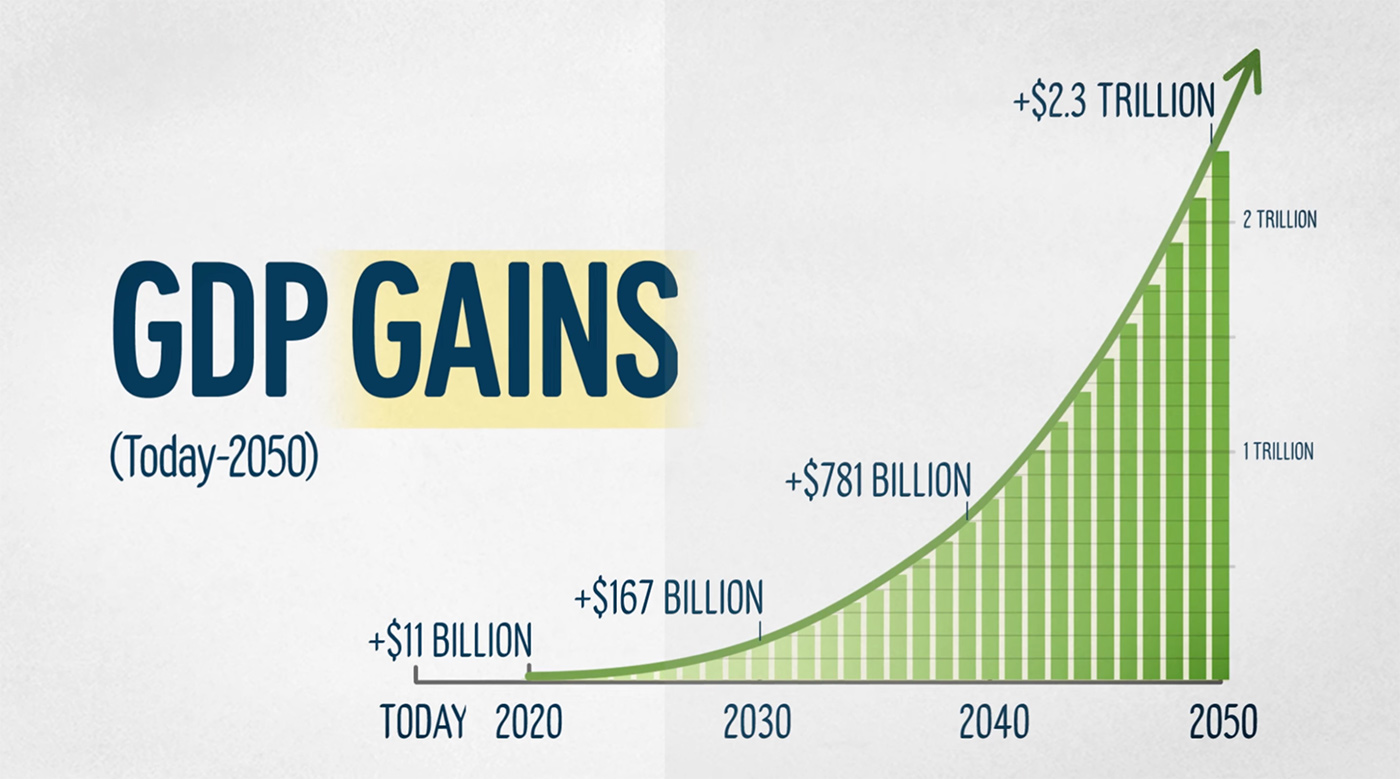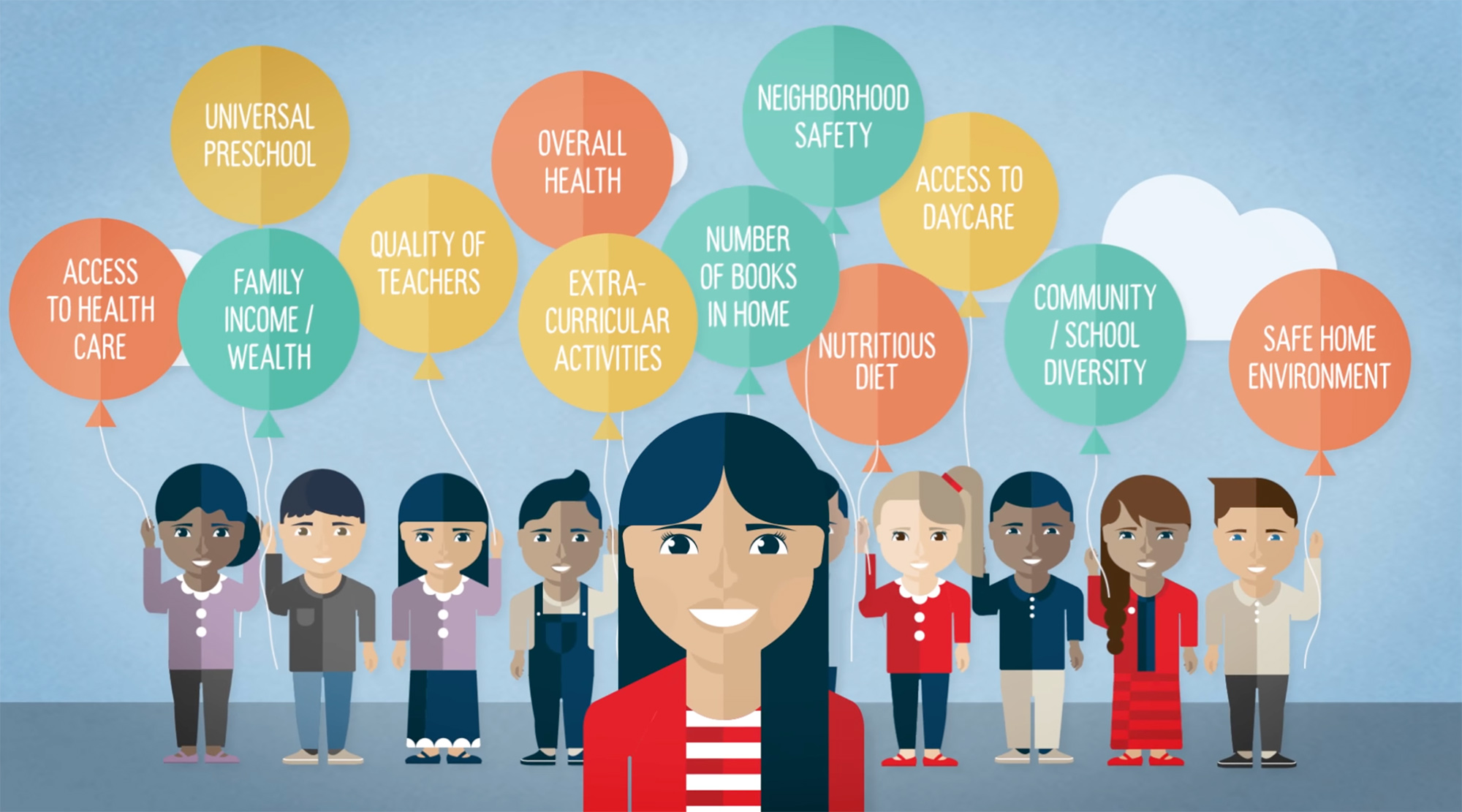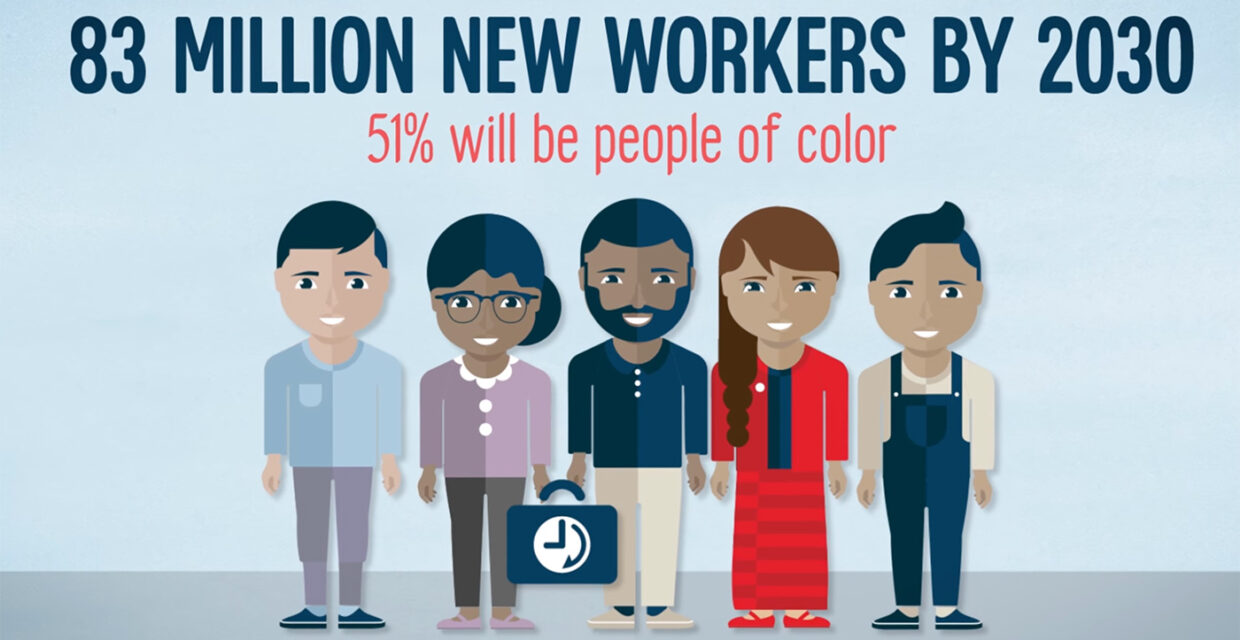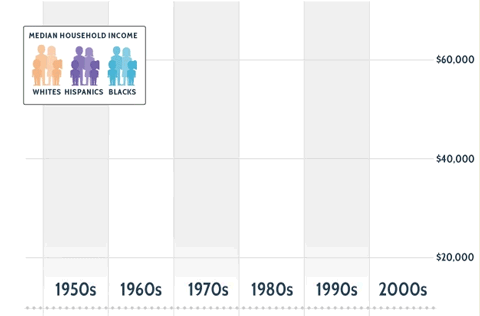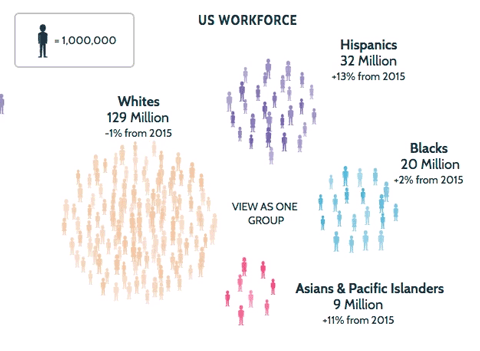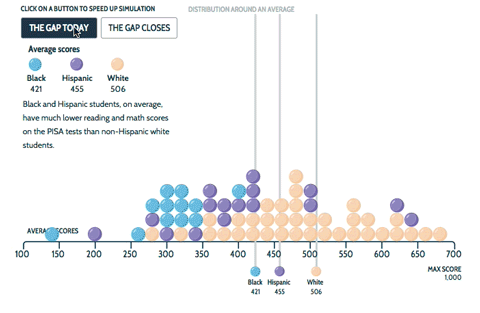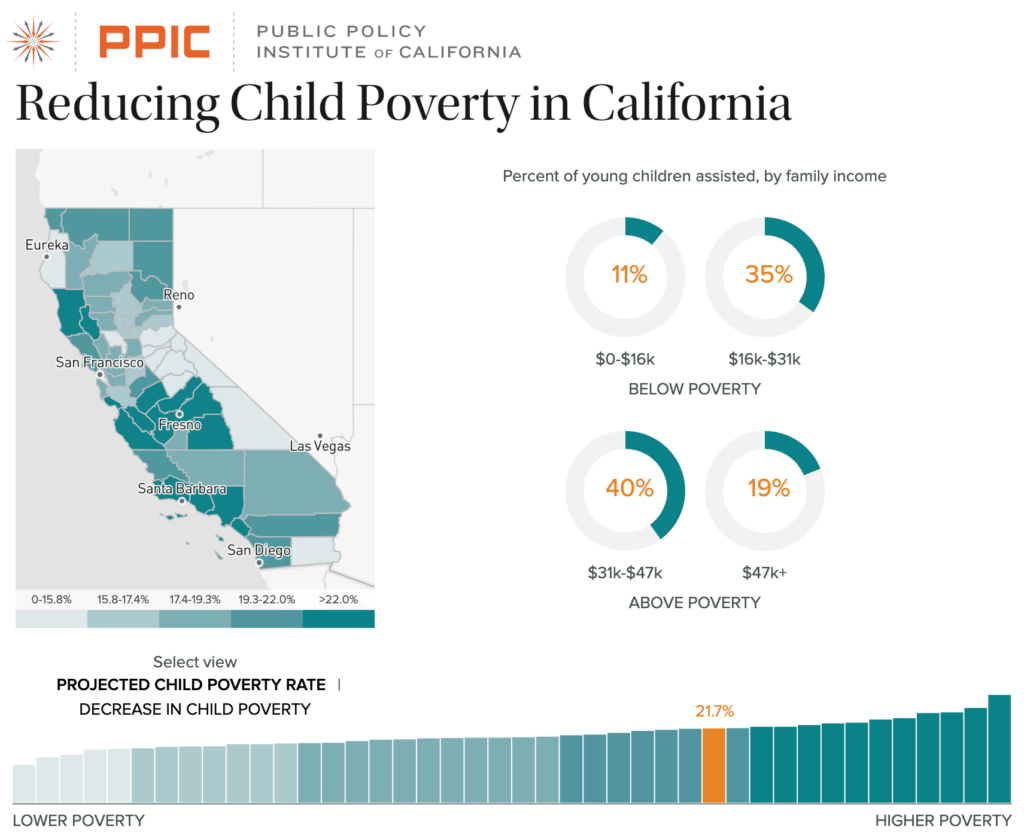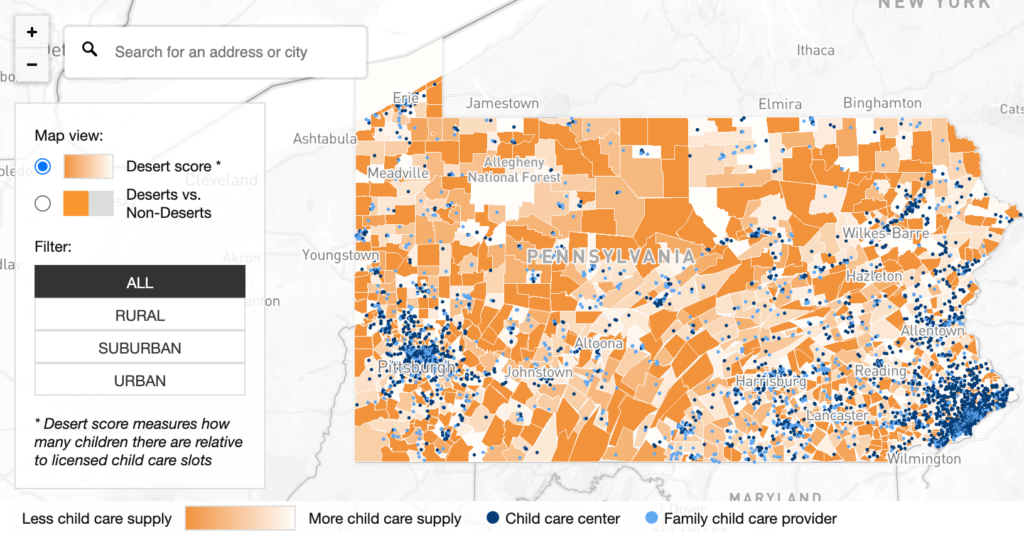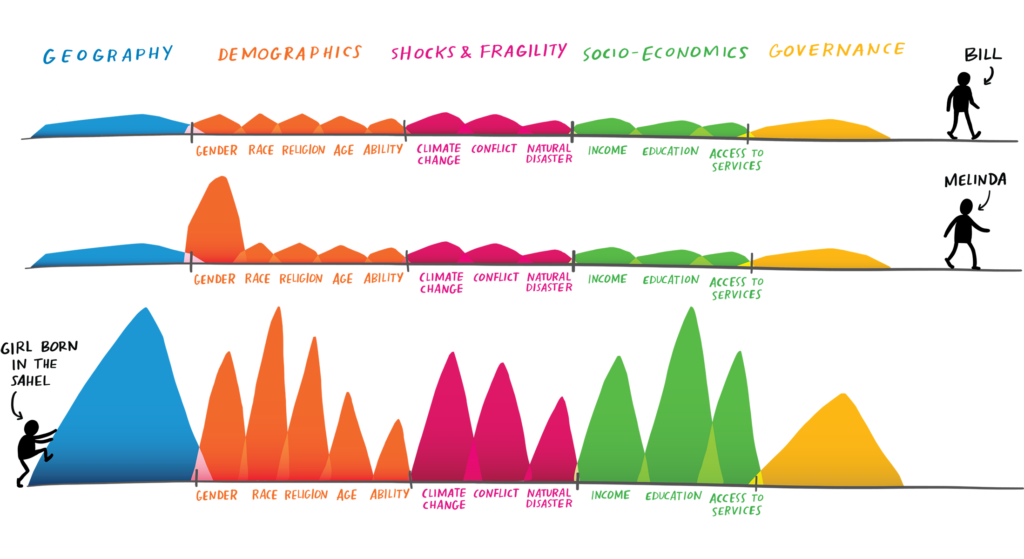Benefits of Closing the Achievement Gap
Center for American Progress / 2015 / Racial Equity
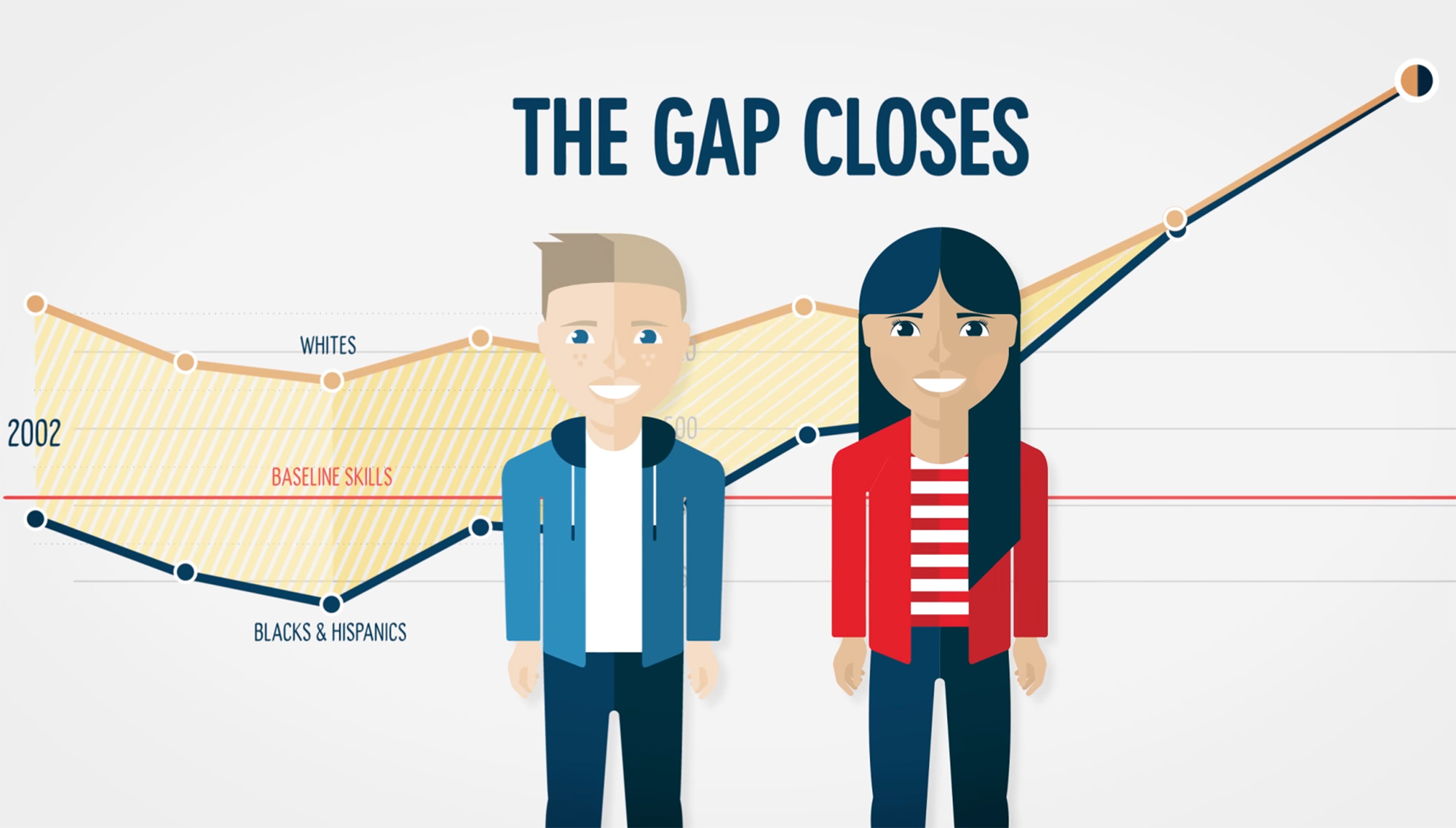
Overview
Graphicacy partnered with the Center for American Progress (CAP) to create a motion graphic video and scrolling narrative of interactive data visualizations that illustrate the economic benefits of closing the achievement gap between Black, Hispanic, and white students. Rising income inequality in the United States is exacerbating long-standing racial and ethnic gaps in, among other things, education outcomes. These troubling gaps can begin to open even before a child’s first day of school.
- Services
- Data Visualization
- Interactive Web Applications
- Motion Graphics & Animation
